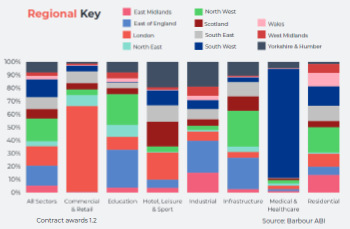Domestic micro-generation
At a domestic scale there are a number of technologies that can be used to generate electricity including solar photovoltaics (PV), wind generators, micro-CHP, fuel cells and so on. These fall into two broad categories:
- The first uses fossil fuels to produce electricity often at a building or community scale thereby eliminating transmission and distribution losses associated with the National Grid.
- The second uses renewable sources such as the wind and sun.
Since the introduction of the government's Feed-in Tariffs (FITs) in 2010, there has been a significant increase in micro-generation and this is expected to continue in the future.
In terms of the domestic sector, by far the most installations registered under the Government’s FIT scheme are solar PV and this will now be considered as an example.
Solar PV has grown rapidly across the world to a total capacity of over 70 GW and a total output of approximately 80 TWh per annum. In terms of global installed capacity, solar PV is now third behind hydro and wind generation.
The UK solar market is ranked 8th in the world [49] and currently PV is viewed by the Government as having the potential to make a significant contribution to low carbon electricity of the future.
Installed costs of PV have dropped by approximately 50 per cent between Summer 2011 and March 2012 [50] resulting in 1.4 GW of installed capacity in 2012 growing to 2.4 GW by the end of June 2013. Of this approximately 1.7 GW [51] was small scale, below 50 kW installations.
A typical domestic installation is between 1.5 and 4 kWp and each kWp will produce approximately 800 kWh over an average year depending on the particular situation. This is a meaningful figure compared to the average household consumption which is approximately 4000 kWh a year.
Micro-generation is a key part of the future electricity strategy but as it grows it raises a number of questions relating to the local distribution network supplying dwellings. For example, if the PV installations fitted to houses on the sunny side of a road are exporting much of their electricity, does this have any detrimental impact on the local distribution network or the sub-station transformer as a result of potentially unbalanced loads? Also, how might local micro-generation interact with new heating and transport demands and will hot spots or other strange effects occur?
At a national level there are also discussions surrounding the stability of the grid as renewable energy approaches 20% of the total supply and solutions to this may call for the installation of huge grid storage ‘batteries’ to restore balance to the system.
Whether at a national or local level there are clearly significant challenges to decarbonising the grid. If it can be achieved however, it potentially decarbonises much of domestic heating and transport and as a result reflects the key role electricity will take in a low carbon future.
This article was created by --BRE. It was taken from The future of electricity in domestic buildings, a review, by Andrew Williams, published in November 2014.
[edit] Related articles on Designing Buildings Wiki
- Allowable solutions.
- Battery energy storage systems with grid-connected solar photovoltaics BR 514.
- Battery storage.
- Carbon ratings for buildings.
- Changing patterns in domestic energy use FB 76.
- Electricity supply.
- Energy harvesting.
- Feed in tariff.
- Financing our future energy infrastructure.
- Green Deal.
- Kilowatt hour.
- Microgeneration.
- Micro-CHP.
- Private wire arrangement.
- Renewable energy.
- Renewable heat incentive.
- Smart Export Guarantee SEG.
- Switchgear.
- The future of electricity in domestic buildings.
- What can government do about district heating.
- Zero carbon homes.
- Zero carbon non domestic buildings.
[edit] External references
- [49] EPIA. Global Market Outlook for Photovoltaics Until 2016. Accessed 3 January 2014.
- [50] DECC. UK Renewable Energy Roadmap Update 2012.
- [51] DECC. UK Solar PV Strategy Part 1: roadmap to a brighter future.
Featured articles and news
Spring Statement 2025 with reactions from industry
Confirming previously announced funding, and welfare changes amid adjusted growth forecast.
Scottish Government responds to Grenfell report
As fund for unsafe cladding assessments is launched.
CLC and BSR process map for HRB approvals
One of the initial outputs of their weekly BSR meetings.
Architects Academy at an insulation manufacturing facility
Programme of technical engagement for aspiring designers.
Building Safety Levy technical consultation response
Details of the planned levy now due in 2026.
Great British Energy install solar on school and NHS sites
200 schools and 200 NHS sites to get solar systems, as first project of the newly formed government initiative.
600 million for 60,000 more skilled construction workers
Announced by Treasury ahead of the Spring Statement.
The restoration of the novelist’s birthplace in Eastwood.
Life Critical Fire Safety External Wall System LCFS EWS
Breaking down what is meant by this now often used term.
PAC report on the Remediation of Dangerous Cladding
Recommendations on workforce, transparency, support, insurance, funding, fraud and mismanagement.
New towns, expanded settlements and housing delivery
Modular inquiry asks if new towns and expanded settlements are an effective means of delivering housing.
Building Engineering Business Survey Q1 2025
Survey shows growth remains flat as skill shortages and volatile pricing persist.
Construction contract awards remain buoyant
Infrastructure up but residential struggles.
Warm Homes Plan and existing energy bill support policies
Breaking down what existing policies are and what they do.
A dynamic brand built for impact stitched into BSRIA’s building fabric.






















